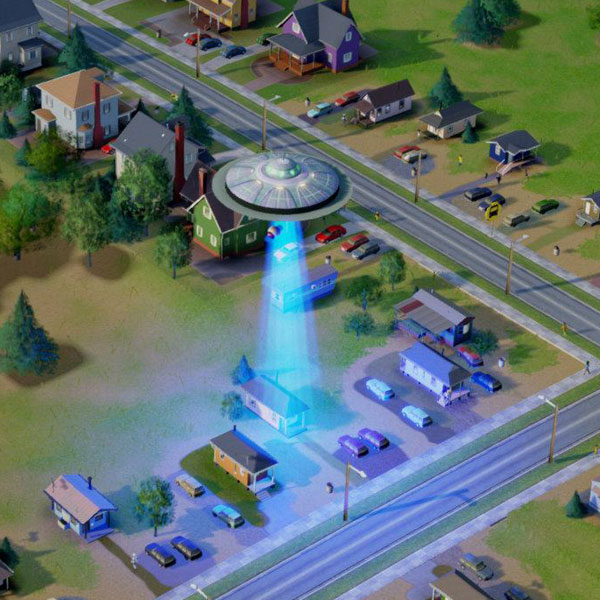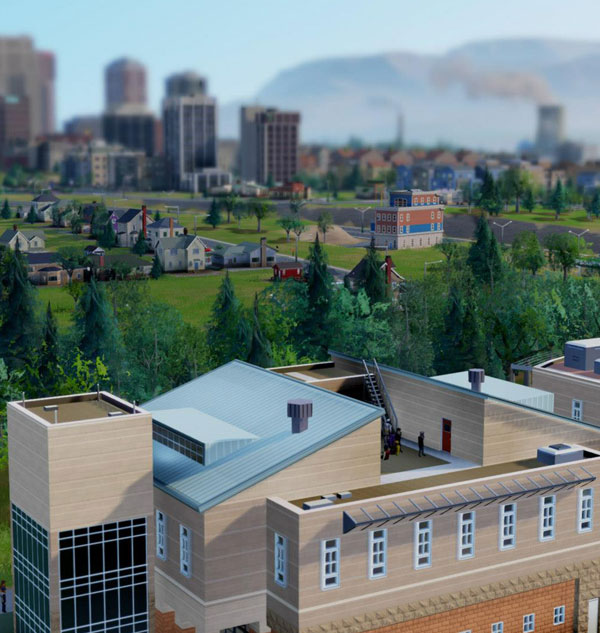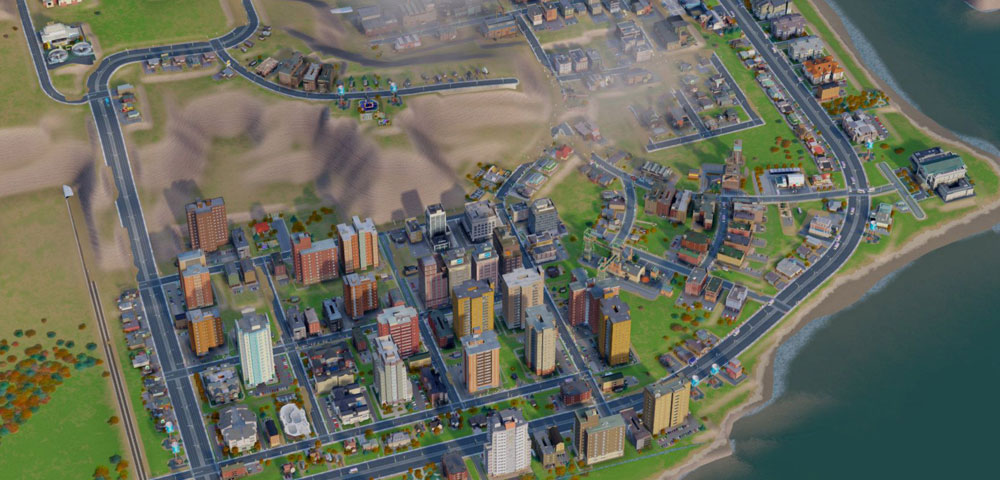Blog / People are protesting low land values
- Date
- April 14, 2013
- Tags

I have a problem with SimCity.
No, that’s not right.
SimCity, I have a problem.
Almost there.
I have a SimCity problem.
Better! I was hopelessly addicted to the new edition of this city builder for two weeks. It felt like my first time with World of Warcraft, where I’d drop everything at the door and rush to my computer to play, only stopping when my body started screaming about its physical needs. I uninstalled the game a few days ago. I can’t have the game on my computer. It’s not good for me.
My compulsion to play SimCity exposes one of the deepest reasons I play: I love organization and planning. In Resident Evil 4 it manifested in my desire to feng shui the briefcase inventory. In Forza Motorsport I tend to keep my garage clean, free of cars I don’t need. If I was into Pokemon I imagine my PC boxes in that game would be meticulously organized.
All of those are tertiary activities to the main gameplay. Resident Evil 4 rewards you for your shooting accuracy. Forza tests your driving abilities. Pokemon wants to see how free time you have.

SimCity isn’t like that. SimCity is Resident Evil 4’s briefcase writ large, made into primary gameplay. The only thing that matters to your city is the omnipotence of your organization and the providence of your planning. Watching the citizens commute to work, go to school, and expand their businesses is like watching a garden grow in super speed. For the first, oh, fifty hours I was in heaven.
Then you start to notice things. It begins with gridlock, as your tens of thousands of citizens commute from home to work and create round-the-block parking. That’s not a typo: I would often have a line of cars encircling a city block, the whole conga line totally immobile. Sometimes buses would help, but usually they wouldn’t. Citizens actually need to go to parks to be happy, or visit commerce centers to spend money. But without the ability to set bus routes they’re at the mercy of the disorganized, wandering people movers. At least public transportation is free (for those riding it).
With gridlock comes a whole host of other problems: people can’t get to work, so they don’t have money, so they go broke and move out. You might have a trading center that’s trying to sell oil or processors on the global market, but the global delivery truck is stuck in traffic and can’t give you any money. Recycling trucks can’t complete their rounds, fire trucks can’t get to burning buildings, students can’t get to school.
There are other fun glitches. Buildings that won’t build, sewage that gets stuck in an intersection for no apparent reason, roads that somehow build themselves slightly diagonal. I imagine all of this will be fixed eventually, but the startling revelations like how pedestrians teleport once they’re above a certain number doesn’t fill me with confidence.

And yet I was hooked on this game. It may be fundamentally broken in many ways, but it’s the purest expression of play for me. I kept thinking I could outsmart the wonky pathfinding and still build a beautiful city if I just tried this new layout or used that combination of public transportation. I could make a mint if I optimized the distance between my processor factory and recycling center and trade depot. I could max out education and still get students to school on time.
I could use a drink.
